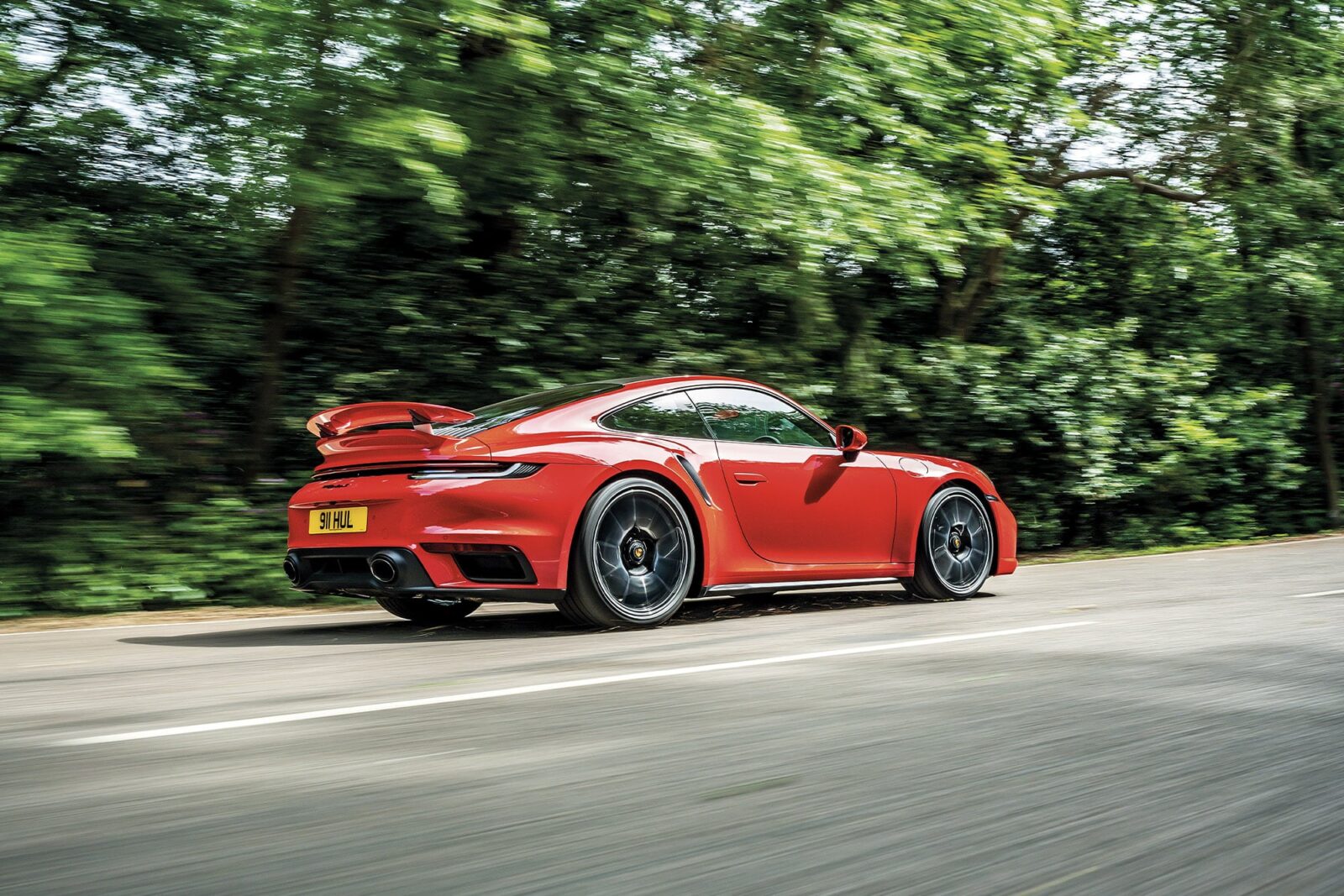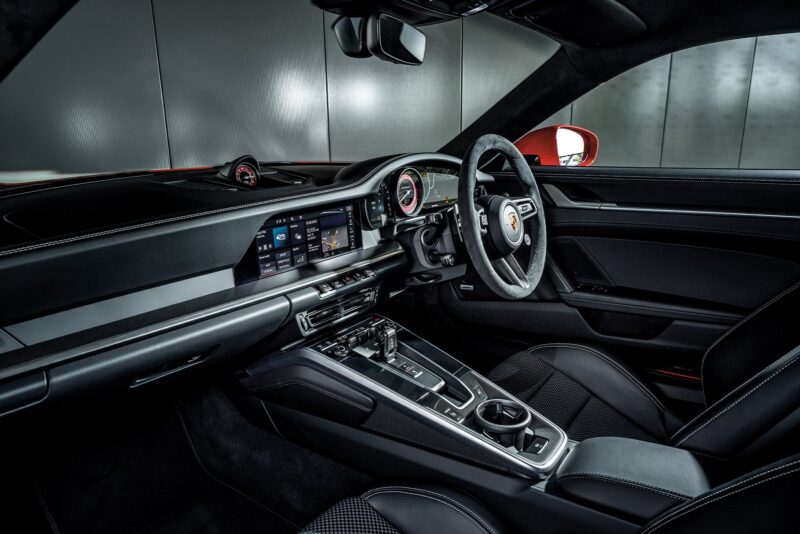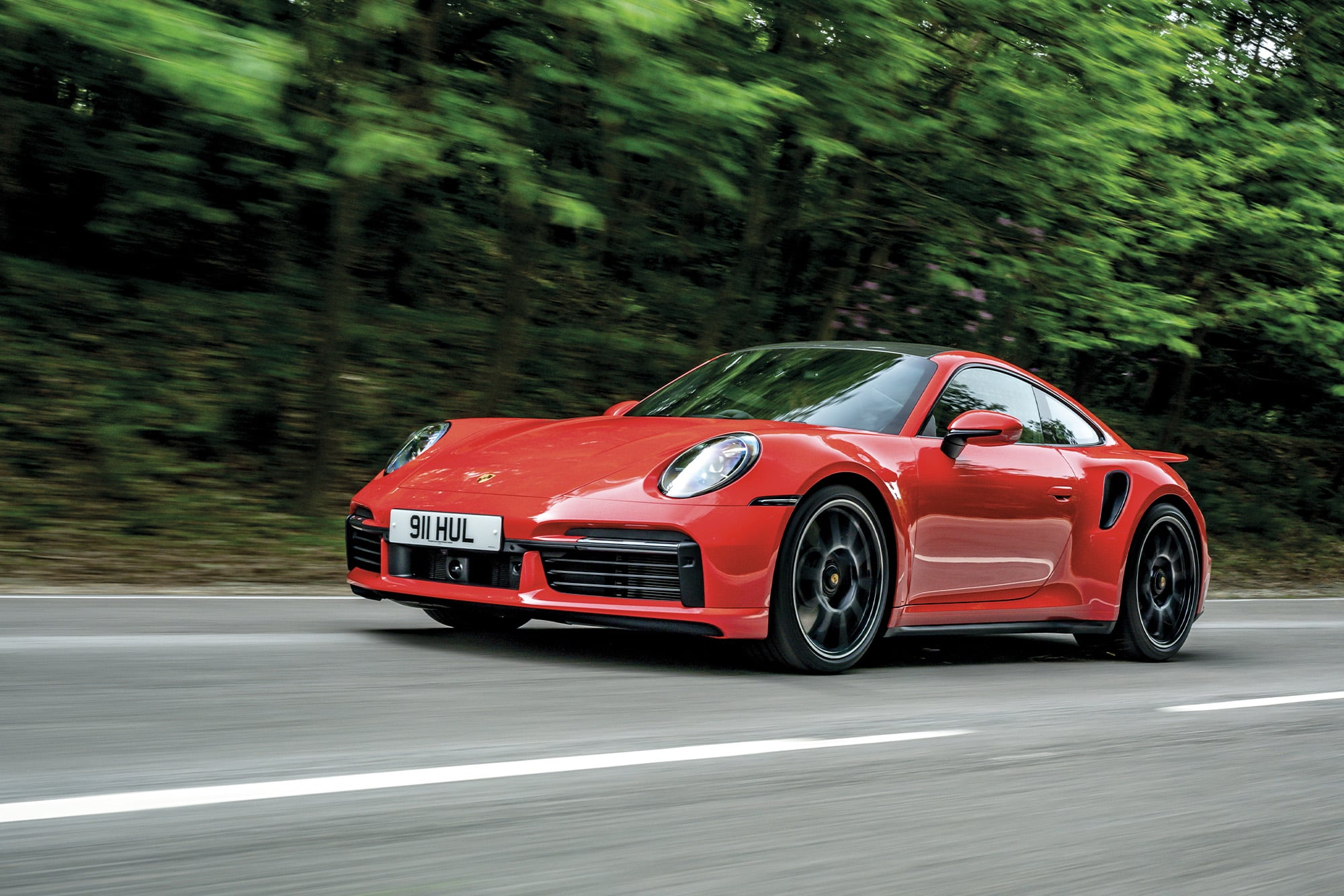Porsche 911 Turbo S: When a turbo doesn’t boost
With Porsche, faster isn’t always better. Andrew Frankel catches up with ‘Mr 911’ to see if the new Turbo S can be an exception

More power and questionable ride quality, but this Turbo is a step in the right direction
This new Porsche 911 Turbo S was just one of many cars I didn’t get to see when it wasn’t launched at this year’s non- existent Geneva Motor Show. It saddened me a little – I’m not one for looking at cars parked on stands, and have long believed that the motor show in its traditional form has been living on borrowed time for years, possibly decades. But I wanted to talk to the man responsible for the car.
Frank-Steffen Walliser was, until recently, in charge of Porsche’s motor sport department, the Weissach-based skunkworks that produces all the road and racing cars with interesting acronyms: GT3, GT2, RS and RSR. But last year he was promoted and re-purposed and, whatever his job title, is known simply as ‘Mr 911’, which means he has responsibility for the future health and well-being of one of the most enduring and iconic sports car names.
And then it turned out we could speak after all, albeit by Zoom. So I ditched the usual pleasantries and suggested that, for all of Porsche’s undoubted power, when it came to the simple business of driving, the 911 Turbo has never lived up to its flagship billing. I may have mentioned that I’d never driven a Turbo I preferred to a cheaper, slower Carrera. But instead of bridling and finding a polite way to tell me I’d completely missed the point of the car, instead, he said: “We are aware of the feedback and have taken steps to address it.” It took the wind out of my sails.
Nevertheless, when I arrived at Porsche Cars GB’s Reading HQ to road test a new car for the first time in 10 weeks, it was with his words in my ears. Just what, exactly, were these steps? Well, another 70bhp from a new twin-turbo 3.8-litre engine to bring its total to 641bhp is obviously going to get your attention, but the weight of what was already the weightiest of 911s was up too, to 1640kg for the coupé. The cabriolet is over 1700kg…
And for a while, it seemed that Walliser’s words were just that. Yes, it was explosively fast, but the old car was scarcely a sluggard: indeed I’d say that point-to-point in all conditions it was likely the fastest production car on sale. There are some improvements – the new 992 interior with its flat screens feels more appropriate in this ultra-high-speed business tool than the more affordable, but more driver-centric Carrera – but it was easy to find the old shortcomings too.

Turbo S features a high-tech interior compared to the previous 911 generations
The ride quality is only just good enough, the tyre roar of its enormous Pirellis tiresome after a while. The engine sounds better than that which it replaces, but still nothing like as tuneful as the 3-litre motor in a basic Carrera which is, wait for it, £73,000 cheaper. And, unsurprisingly given it must wring 170bhp from each litre of capacity, there is turbo lag too.
But still it certainly improves on the previous Turbo S, and in Porsche’s eyes that perhaps means ‘job done’. But I remained keen to discover what, if anything, Walliser was talking about, and it didn’t take more than a couple of junctions to realise I wasn’t going to find out on the M4.
I headed north up to some of my favourite roads near Wantage where you can still stretch a car’s legs. It is a rabidly fast machine, and the thrust is not moderated by traction limitations, because so long as the road is straight and smooth, there aren’t any. I did one launch control start, hit 60mph in 2.6sec and felt no inclination to do another. I can remember a time when taking twice as long to do as much seemed like science fiction. Though others may not say it, the truth is that in any car, such violence does not amount to a particularly pleasant experience. When you consider this car will pull over a g off the line, that’s not surprising, for at that moment you’re gaining speed quicker than almost any road car can lose it without driving into a tree.
But as the miles accrued, I started to understand what Walliser meant. The old car always felt planted, but this one feels poised too, which is not quite the same thing. It is more alert to your instructions, heavier yet sharper to steer, keener to sniff out an apex. Porsche has widened the car at both ends but at the front far more than the back, which has helped rebalance it.
There is an old road testing term which expresses one measure of a car’s handling, and we call it ‘adjustability’; it refers to a car’s willingness to position itself around its axis or how easily its attitude changes according to throttle opening. And this is where the new Turbo scores most heavily. It gives you options mid-corner the old car would not provide: you can trim your line more precisely than you might imagine in a car of this mass and yes, if you want, you can lift off, let the back loose, power on and slide out. It’s all good fun.
And that is what the old car missed. Certainly it was a car to admire, but it made you feel more like an observer of the action rather than a participant. Yet it remains true that I’ve still not sampled a Turbo I’ve preferred to the standard car. Astounding though it is in some ways, and capable as it is in almost all, the Turbo S remains a derivative within the range. The superheroes are the Carrera and Carrera S, a fact not even 641bhp and a near £156,000 price tag can conceal.

Porsche 911 Turbo S
Price £155,970
Engine 3.8 litres, six cylinders, turbocharged
Power 641bhp l Weight 1640kg
Power to weight 391bhp per tonne
Transmission eight-speed automatic, four-wheel drive
0-62mph 2.7sec
Top speed 205mph
Economy 23.5mpg
CO2 271g/km
Verdict The Turbo makes its mark, but it is still not as sweet as the Carrera

